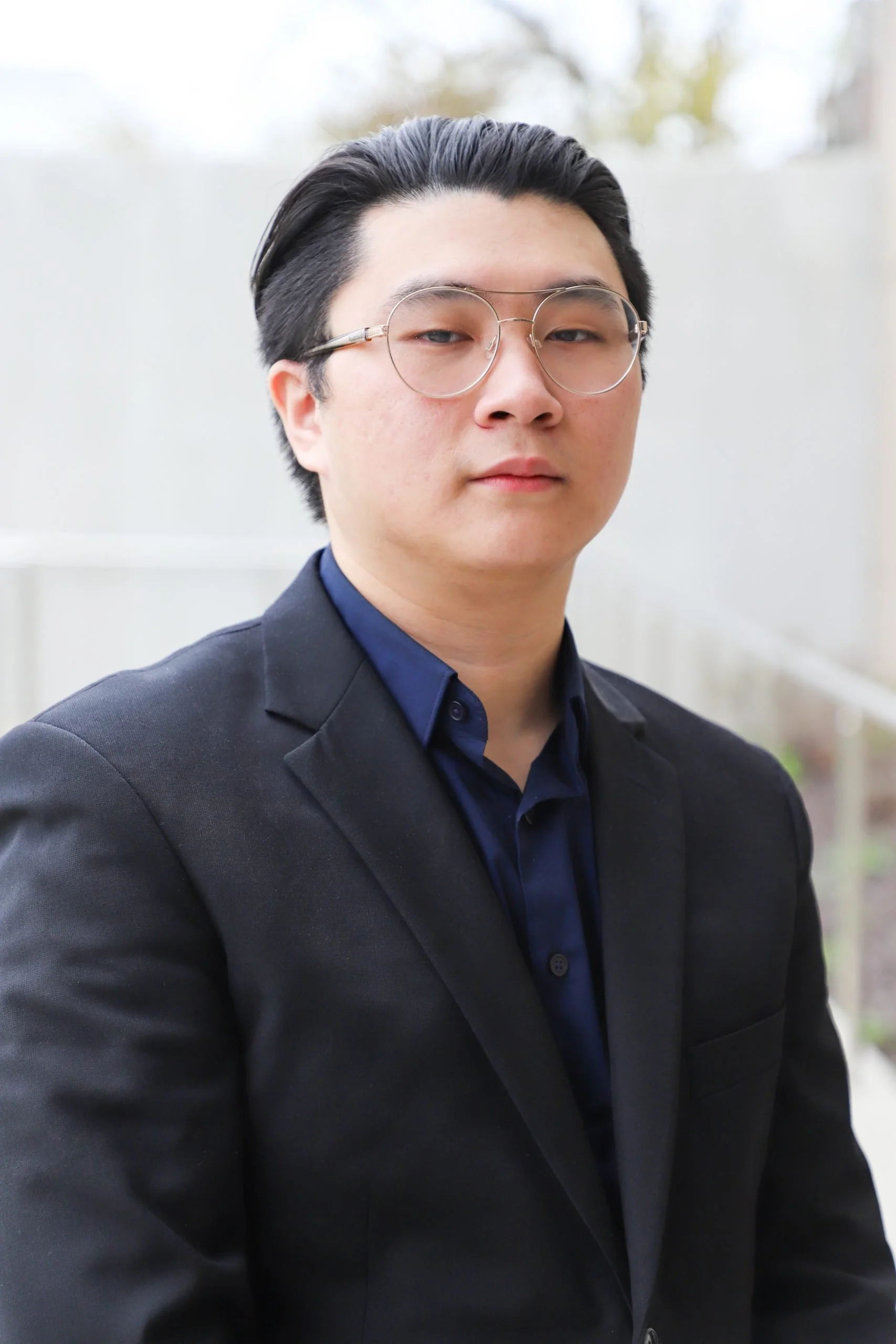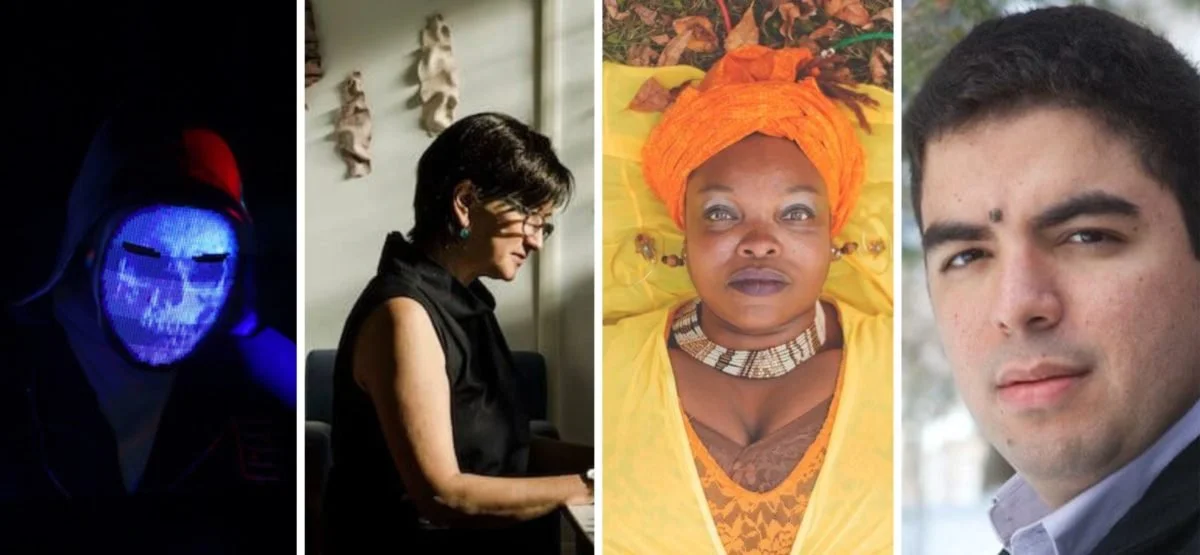We invited Oswald Huỳnh from American Composers Forum to speak with the 2022 ACF McKnight Composer Fellows in preperation for their showcase performance at Icehouse on February 3.
American Composers Forum’s McKnight Composer Fellowships provide meaningful support to artists to create music through an engagement with Minnesota communities. With support from the McKnight Foundation, ACF selects four Minnesota-based music creators for the program each year.
In partnership with The Great Northern, the 2022 ACF McKnight Composer Fellows will present their work on Friday, February 3 at Icehouse in Minneapolis. Mitchell Bercier is a composer and illustrator who produces electronic and algorithmic dance music under the artist name Ghostchamb3r; composer Mary Ellen Childs creates distinctive sound worlds and often writes for specific architecture or environments; Queen Drea is a sound alchemist mixing up potions laced with looped natural and affected vocals, jagged rhythms, and found sounds; and Reinaldo Moya is a graduate of Venezuela’s El Sistema music education system who composes works for the concert stage.
Leading up to the concert, ACF reached out to the composers to talk about their works, compositional process, and how winter affects their creativity.

Mitchell Bercier
Oswald Huỳnh: I’ve really enjoyed exploring your music, especially your collaboration with the Minnesota Opera, Sapphica. Love seeing these two musical worlds collide. Both Sapphica and your upcoming performance include aspects of live coding! What musical parameters are being controlled by you through code? And could you talk about what you mean by “Neo-Dirge” when describing your duo with Rachel Phoenix?
Mitchell Bercier: Those are both great questions. Lately I’ve been using live code for controlling samples more than anything. A lot of the sounds I create for my music use really advanced algorithms inside commercial soft synths that are really difficult to recreate with live code. Sometimes I can dial those sounds in pretty close with just live code as well, so I use a mixture of samples and code. With live coding you can do a lot with a sample in real time and so sometimes just a short, half a second sample from a synth patch is enough to create an entire part of a full piece with. So musically there’s a lot I do with it depending on the piece of music. For the piece I’m working on with Rachel the plan is to control the music with live code and let her vocals sit within the mix without any code so she’s more or less performing with a bunch of algorithms that I’m cuing from the computer.
Neo-Dirge was something Rachel came up with. We were talking about how to categorize the stuff I had been producing and how that sound has been evolving. It doesn’t fit into any of the electronic music subgenres very neatly. I was telling Rachel what I wanted to create with her was something dark, electronic, and with a variety of EDM influences, from techno to dubstep, but with a dark sound and a strong emphasis on sound design and texture. It’s heavy to the point where it kind of falls into the abyss at certain moments. At her suggestion I put together a playlist to give her a sense of what I had in mind and at some point in one of our conversations she said “Yeah, it’s got that Neo-Dirge sound”. I thought that was perfect. It sums up the sound really well. We’re conjuring the gravity of intense situations and turning those into electronic sounds.
OH: What is your relationship with winter and how does it affect you creatively?
Mitchell Bercier: I despise the winter, actually! I think of winter as a state of entropy. I’m someone who likes to always be moving and transforming so the winter is usually very hard for me. I’m a night owl as well and have insomnia so winter usually feels like five months of night time for me. I think I definitely translate a lot of my feelings about winter into my music. If I had lived in California my entire life I’d probably have a broader color palette for my sounds than just a thousand shades of growly bass haha. But there’s also some fleeting moments of magic the winter provides. One of my favorite words is apricity. It means the way light shimmers on snow. On a bright winter day you can see the snow glitter. I’ve written some really pretty synth patches trying to capture that into sound. Snow and ice crystals are something that reminds me that life is always changing and so is the environment around us and I also take a lot of comfort in that.

Mary Ellen Childs
OH: With your two audio-visual installations, it seems like there is an innate physicality that is an important aspect of experiencing your work. I am especially excited for NORTH and its goal in connecting people with nature. Can you describe how the physical experience informs your music, and, in turn, how that affects the collaborative process?
Mary Ellen Childs: Recently I spent time in the Arctic, which was the inspiration for NORTH. This trip departed from the international territory of Svalbard, a mountainous Arctic archipelago at the far northern reaches of our planet, about 10 degrees from the North Pole. For two weeks we lived aboard a Tall Ship, sailing the waters around the archipelago and making landfall daily. I immersed myself in the landscape of the Arctic, a visually arresting and intense sensory experience. I experienced many subtleties — small changes in light, color, sense of time. I listened deeply and recorded sounds, the crunch of snow underfoot, the crackling and popping sounds of ice, waves of water on rocky shores, the distant sound of a calving iceberg. I took slews of photos and recorded video which would form the basis of the visual material for NORTH.
When composing, I delved into the sensibility of the experience: the quiet, the iciness, a slowing of time, the expansive landscape. The work is for St. Paul ensemble Zeitgeist and we spent several days in the studio, recording and layering sound. NORTH is an installation, not for a concert performance where listeners all sit together at a specified time and listen beginning to end. People may come and go in the installation, staying as long as they like, and moving around the space or settling in for a while. I handle the unfolding of time — the arc of a piece — differently for this context, more expansively, which is fitting for the Arctic.

My collaborators include the painter Lindsy Halleckson, who was on the same Arctic trip, and whose paintings reflect the subtle colors in the sky, and videographer/editors Tamara Ober and Caitlin Hammel. Tamara spends a lot of time on the North Shore of Minnesota and she gathered some gorgeous winter footage of ice, sky, and water.
OH: What is your relationship with winter and how does it affect you creatively?

Mary Ellen Childs: I love this question. Although I grew up mostly in a cold climate and have lived in Minneapolis for much of my adult life, I’ve never been a winter aficionado. I don’t ski, I’m not into winter sports, I don’t like shoveling snow. Like anyone, I appreciate the beauty of a new snowfall. I especially love a gentle nighttime snow and the calm quiet it brings or the kind of lacy snow that sticks to every branch, creating a winter wonderland. So then why would I choose to spend time in the extremes of the Arctic? The answer is simple: I’m always eager to seek out experiences. Things that challenge me also expand me — and that invigorates my creative process. I especially respond to visceral experiences, and the extremes of the Arctic are certainly that. The unrelenting cold, the vast expanses, the intense blues of glaciers and icebergs. I find composing to be a bodily experience as well as an engagement of mind, so having intense physical experiences fuels my creativity.

Queen Drea
OH: On your website, you provide this poignant statement on depression in the Black community: “I have been investigating some thoughts on Black Love and how it is strong enough to withstand being denied. Acknowledging that the way we came to this country and the way our families were separated is the reason why we are separated now. Acknowledging the pain of this reality. Acknowledging the beauty of this reality. Acknowledging Black Love in its many forms and expressing this love thru my art.” How has this philosophy informed your creative practice and what do you hope to communicate with your music?
Queen Drea: ADOS (American descendants of slaves) people were “made” here, on THIS soil. Like the protagonist in the story “Frankenstein” by Mary Shelley, we come from bits and pieces of people from a long-lost land that we don’t know. And even though we were “made” here, it often seems as if we’re not wanted or welcome here. With my artistry, I offer to this country, my country “Why do you look at the speck of sawdust in your brother’s eye and pay no attention to the plank in your own eye?” (Matthew 7:3). We as Black people are extremely complex. Our existence here in the United States is fraught with so many emotions and forced ideologies that are not inherently ours OR at the core of our nature, that we have to carry and live with. My Country, do you not know what this does to a people? Yet under our armor of protection, we are soft, and compassionate, WE are our ancestors incarnate. We will continue to collaborate, innovate, and elevate. So when I sit down to create, I create with extreme care and space for what I have personally lived, and the DNA memory of my ancestors.
OH: What is your relationship with winter and how does it affect you creatively?
Queen Drea: LAAAAAWWWDDDD!!! I am not a fan of having to actually LIVE in such a cold place and every November/December I start to get mad that I live here. I blame my parents… (giggle). But one thing winter does is force me to slow down and be intentional and reflective. The slowdown is regenerative. So… I guess winter is alright.

Reinaldo Moya
OH: Home and connection are important elements in your two pieces, especially in your piece Diáspora. What is the relationship between your upbringing in Venezuela and your music? How did you musically capture your emotions on the situation in Venezuela?
Reinaldo Moya: Diáspora is my first work of chamber music written expressly for Venezuelan musicians. I was excited when we worked out the commission, and it immediately got me thinking about our common Venezuelan identity and heritage. Especially in the early days of 2019, being a Venezuelan away from home is a strange mix of worry, sadness, nostalgia, disappointment, hope, and many other emotions. The Venezuelan crisis was very much in my mind as I wrote this work, but I didn’t want to feel like I was minimizing (or cheapening) the very real suffering going on in Venezuela by trying to somehow depict the situation directly in my music. I opted instead to approach the writing of this work from a perspective that I know: that of being a Venezuelan abroad and trying to communicate with family still left at home, attempting to get news and information, and generally feeling helpless and worried. Diáspora is then a work that is personal, but one that looks at a tragedy in an oblique way.
The work’s two movements have resilience at their core. Venezuelans are famously optimistic and good-natured. We always look for ways to joke around so that we can release the tension in a situation. It is this persevering spirit that continues to help Venezuelans get through this crisis. This resilience is manifested differently in each movement. In the first movement, Bululú Rucaneao, a traditional Venezuelan merengue pattern is heard constantly, but in ever-changing contexts. A bululú is a typical Venezuelan word for a mess, a throng of people. Rucaneao relates to the 5/8 pattern that is often found in merengues from Caracas. I see this movement as representing the good humor and character that most Venezuelans have, even in the face of adversity.
The second movement is titled “Todo bien, mijo”: Passacaglia. In this movement, I explore the experience of trying to communicate with family members who are still living in Venezuela, and having to wonder if they’re telling you the whole story about what they’re experiencing. They say: “Todo bien, mijo,” everything is good, my son. But those on the outside know that things are far from good. This is how Venezuelans approach the crisis: they keep on keeping on, and they simply say “todo bien, mijo.”
Diáspora is my humble attempt to process my own feelings about this situation. It is not my intention to try to represent the entirety of this crisis in one piece of chamber music. Rather, Diáspora is a way for me to get in touch with certain emotions that I would rather not face head on.
OH: What is your relationship with winter and how does it affect you creatively?
Reinaldo Moya: As a Venezuelan and someone who grew up near the tropics, I still have not fully gotten used to Minnesota winters. However, it is a time that I cherish and almost even “enjoy.” It is a time to gather with family, have a chance to rest and reflect and a bit of a break from working. I think that this time of rest winds up being important for my creative work later in the winter. Another good aspect of winter for my creativity is the fact that I’m not too excited about being outside and can concentrate much more on my work since I’m less tempted to leave the house.

Oswald Huỳnh is a composer, educator, and the Artist Support Associate at the American Composers Forum. His works navigate Vietnamese aesthetics and tradition, language and translation, and the relationship between heritage and identity. Oswald writes music that explores timbre and texture to create evocative soundscapes rooted in storytelling, culture, and memory. Currently based in Portland, OR, he also teaches music theory at the Portland Youth Philharmonic.

